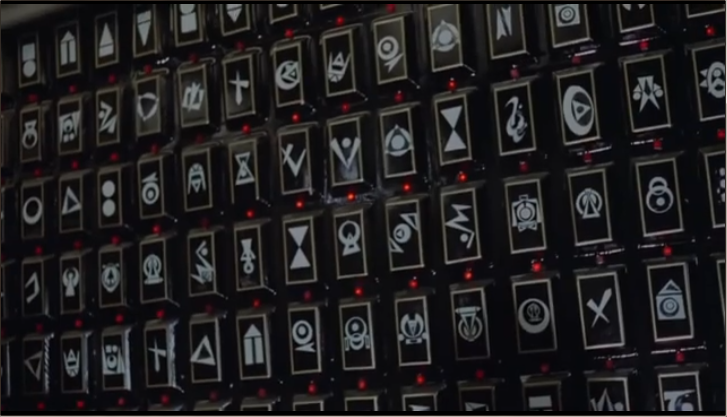
©2025, technoventure, inc.
Naming The ϕ System

Shot from the 1980 Movie “Hangar 18”
Some of my inspiration for a new programming language came from the 1980 movie “Hangar 18”. Concepts are purveyed using written language. This idea was skillfully illustrated for us with the Martian invaders protrayed in the movie. What those concepts might have been is only our guess. The movie made me wonder how much more advanced the alien computers must have been when compared to our own. In large part this may have come from their spoken language. The possibility that UFOs reflect technologies that are beyond our own is very real. Making greater use of the human ability to analyze images means that we need a much larger character set for programming.
My first exposure to C was in 1985. It took me less than a year to realize that Dennis Ritchie had run out of characters when defining the C programming language. ASCII has been limiting our ability to express ideas as concepts are at the root of programming languages. Expanding the character set used for programming greatly increases the potential for greater expression with a given amount of text. I now find myself alone with over three and a half decades of experience using Unicode as a base character set for compiled language computer programming.
Ritchie named his programming language with a simple single alphabetic character. I wanted to do the same kind of thing but it had to be a character that was outside the ASCII character set. I chose ‘ϕ’ for several reasons. It is awesome looking and it can't possibly be confused with any ASCII character. Also, it is used by mathematicians to represent a constant that is called “The Golden Ratio”. This concept inspires thoughts of perfection. I wanted this subliminal message to be associated with the new paradigm. But my ideas were broader than just a programming language. In my imagination, the system had profound capabilities that could only be realized by creating an new operating system and even processor hardware to run it on along with its applications. What the miracle at Bell labs did in the co-development of C and UNIX would have to be surpassed in this new endeavor. Their choice of processors was limited to off-the-shelf hardware. In the age of FPGA's, we no longer have that limitation because of soft-cores. Ultimately, the goal is to produce a working ASIC.
How is ϕ Pronounced?
ϕ System Logo
Many parts of “The ϕ System” have names that are prefixed
with ‘ϕ’. The list includes ϕEdit, ϕEngine, ϕPPL, ϕOS, ϕAsm,
ϕLnk, ϕMgr, ϕBus, ϕSemiVec and many more.